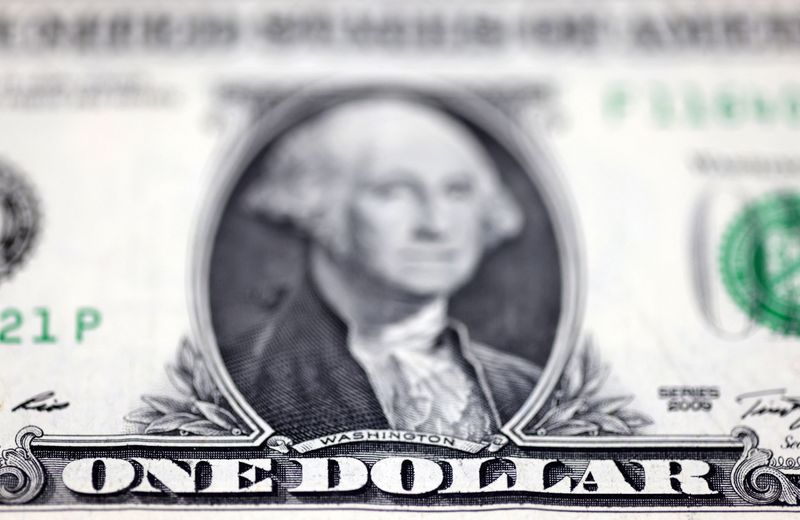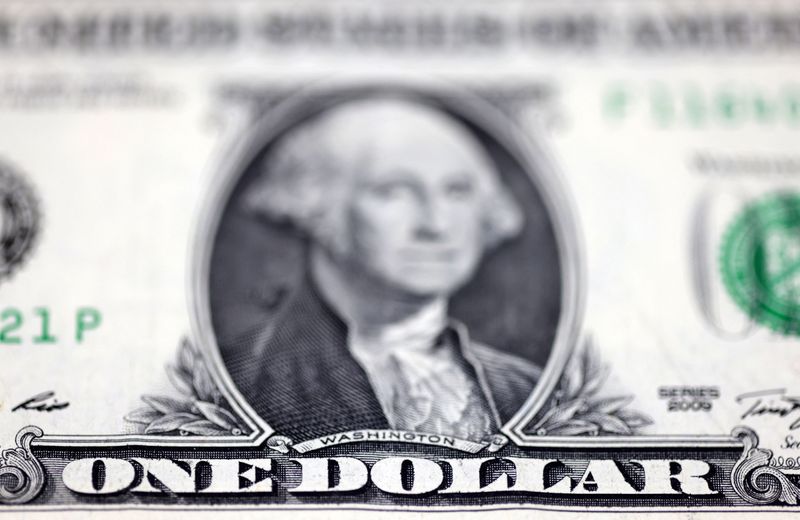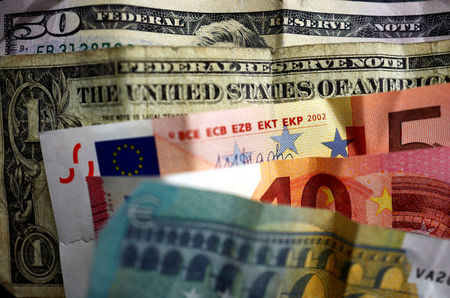
By Chuck Mikolajczak
NEW YORK (Reuters) -The dollar edged higher on Tuesday in thin holiday trading as the expected slower path of interest rate cuts from the U.S. Federal Reserve compared with other global central banks continued to command market direction.
The greenback has jumped more than 7% since the end of September, powered in part by growing expectations the U.S. economy will see accelerated growth under policies from President-elect Donald Trump, while sticky inflation has dampened expectations on how aggressive the Fed will be in reducing interest rates.
Those expectations for the U.S. stand in contrast to growth forecasts and the interest rate views for other global economies and central banks, which have led to expanding interest rate differentials.
The Fed last week projected a more measured path of rate cuts than the market had been anticipating, providing another boost to U.S. Treasury yields, with the benchmark 10-year note yield reaching a 7-month high of 4.629% on Tuesday.
“The markets are all having a little bit of a Christmas bonus with the election and they’re expecting positive things,” said Joseph Trevisani, senior analyst at FX Street in New York.
“Certainly that’s true for the dollar because we’ve seen a pullback in the expectations for further rate cuts, and as we all know, the most important factor for the currency markets is the rate structure between the central banks.”
The dollar index, which measures the greenback against a basket of currencies, rose 0.14% to 108.24, with the euro down 0.15% at $1.0389. The index is on track for its fifth gain in the past six sessions.
Trading volumes are likely to be thin through next week as the year draws to a close, with the economic calendar very light, and analysts expect rates to be the main driver for the foreign exchange market until the U.S. employment report on Jan. 10.
Sterling weakened 0.06% to $1.2527.
Against the yen, the dollar strengthened 0.1% to 157.34 as the Japanese currency remains near levels that have recently prompted Japanese authorities to intervene in an effort to support it.

Minutes from the Bank of Japan’s meeting last week showed policymakers agreed in October to keep raising interest rates if the economy moves in line with their forecast, but some stressed the need for caution on uncertainty over U.S. economic policy.
Trump’s return to the White House has brought about uncertainty over how his expected policies for tariffs, lower taxes and immigration curbs might affect policy.
This post is originally published on INVESTING.




